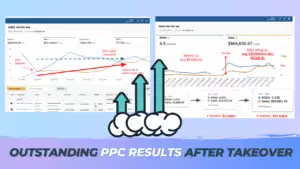Welcome to this guest Masterclass with Anthony Cofrancesco!
Anthony Cofrancesco is the Industry Liaison of PickFu. He’s the previous owner of Virtuous Graphics, a marketing agency offering copywriting, graphic design, photography, and videography to Amazon sellers. He even worked at Amazon early in his career.
Today, he will share advice on boosting Amazon sales through 3D product renderings, an alternative to photography.

In this Blog:
- What are 3D Renders?
- Creating 3D Renders
- Strategies to implement
- Concepts of 3D Renders
Anthony is a 26-year-old college dropout, who has visited over 50 countries and is now living full-time in Manila, Philippines. After working in Amazon for about 18 months, he quit and founded a creative agency called Virtuous Graphics. He grew the company from 7 to about 20 employees before he exited in 2019. Anthony then joined PickFu, a company that is all about giving quick insights for customers’ feedback, which is of course an important tool for conversion optimization.
Now, let’s get started!
What are 3D Renders?
Essential Framework
Even as 3D rendering grows in the industry people often sidestep the visual and technological approach. To that Anothony says, “3D rendering technology has come a long way.”
Right now, it’s something that we often take for granted. When 3D rendering first started, in the 1970s, it was almost like magic. They were just roughly able to simulate a digital real-world environment (as seen in the image below to the right).
Fast-forward to the 2000s (on the right) you can see a huge difference in photorealism just within 2 years, but that was almost 20 years ago. Now when Amazon sellers think of 3D rendering they see:
An image that looks okay, but not quite right. In simple words – it looks fake. Going back to its progress, 3D renders really have come a long way, as you can see (in the image below) the actual photorealism possible through the technology. Now, granted, zooming in, you can catch the animation, but the overall detail is quite realistic.
Anthony and his team have tested this question with the PickFu panel. They asked 200 Amazon Prime members what they thought about 3D renders.
In terms of the feedback, it was all based on theory. When they asked point-blank about 3D renders and buying a product that used them, they all stated they didn’t like it and were considered authentic.
Below you can see responses and terms used to word their concerns.
But, again, that was all based on theory.
When Antony and his team actually showed them examples of real, high-quality renders (like the ones below), they actually voted a little differently.
Their responses changed, and as you can see for some products, 3D renderings can look quite convincing and realistic. For example, in the picture below you can see the mug (the product) put into a photorealistic environment. Upon first glance, people said they liked the image stating, “it’s beautiful and aspirational.”
Aside from the 5-star reviews, a few of the renders even brought out a few low star reviews, but they were infrequent – approximately 1 out of 50, would give the below reviews:
In this case (the picture above), if you look really closely the mug doesn’t look quite realistic, but at first glance, the mug does catch one’s attention. What’s interesting is that the PickFu panel responses criticized the scene more than the image quality, stating it was “too cheesy/cliche” and that’s why they weren’t drawn to the product.
How do 3D renders stand against actual photos?
Anthony and his team also tested them against real photos for a range of products, and even though when looked at objectively it’s clearly evident which image in real, 52% of the time people voted for Option A – the 3D rendering.
This also was seen in other products:
Even though your brain knows something isn’t real, something about the aesthetic appeal of an image can go a long way. As you can see Option B – the 3D rendering, for a children’s slim kit, was voted 52% of the time.
The Key takeaway is of course objective, not all products that use 3D renderings win, but it is something you should look at.
What are the terms of service implications of using 3D renders?
What Amazon would say is that:
But working in Amazon has given Anthony an inside view of the situation. As you can see from the image below, Amazon is really focused on being “Earth’s most customer-centric company.”
Therefore the guidance here is that – especially in different categories – if your 3D renders look as good or better than the product photography, you should explore using renders.
Think about it from the customers’ perspective. If you look at the PickFu poll feedback, people are concerned about not getting what they see. And if you as a seller are intentionally misleading the customer’s Amazon will dock you for not providing a good customer experience. But on the other hand, if your image does a better job of representing the product, Amazon won’t blacklist you even if you’re going against terms of services.
In fact, here’s a fun fact! The global Swedish furniture brand – IKEA, actually uses 3D rendering on their eCommerce sites. To be specific
The reason why companies choose to use renders over photos, aside from aesthetics, renders offer some distinct advantages.
Visually we’re all drawn to the appeal renders often give. Think about Star Wars, the scenes and ships are all 3D renders, yet we’re drawn to them in wonder and amusement.
Going to practicality, once you’re done with a scene or a shoot you don’t have to go through the painstaking process of setting it all up again. With 3D renders, you can easily save and revisit them at any given time.
When it comes to physical limitations, there is a lot that 3D renders can offer compared to physical photography.
Other advantages include:
Creating 3D Renders:
1. STP File
Short for STEP-File/ISO 103030-21, the file is an assembly one. For any product that is injection molded, or placed together by a factory, your manufacturer will 99% have an STP file, just like the one below. This makes creating a render easier, as the majority of the work is already done.
2. Template
Most products can actually be built for pre-made template libraries. These are companies like TurboSquid and 3docean who provide templates that the artist can use to create a render of your product.
3. Custom
This is less of an application for eCommerce and more for forward-thinking. Custom renders can be made completely custom, and can also be expensive, as it takes a lot more time and experience (talent) to create something at that caliber. Below are two examples of custom renders:
Every year this technology progresses, it gets better, more realistic. And you’re going to see more and more companies and sellers transition towards 3D renders.
Strategies for using 3D Renders
Static and dynamic products
There are two different types of images or products, static and dynamic.
Static products (left) are ones that are just “going to sit.” What that means that these are more ‘showpiece’ products, that people don’t often interact with. Whereas dynamic products (right) are one that is worn.
Comparatively, static products are easier to render as they sit still, away from contact. Whereas dynamic ones, while not impossible, are harder to render due to orientation and positioning.
Below are examples of static products. As you can see you can take the mug and place it in any static environment without it looking “out of place.” When looking for products people often focus on it being a good potential purchase, not debating over the reality of the picture. Therefore on a first glance basis, a 3D rendering works quite effectively in representing a product.
The next two images are both 3D renders, they’re not real. They also show how you can create a 3D environment that can help someone visualize a scenario (regarding the product) in their head.
As you can see, one is easily able to replicate multiple scenes and scenarios, without having to physically build a scene. You can test the product to see exactly what works, making things faster and easier to get the biggest impact on the customer, as you can see in the picture below:
Bulky and Big products
Renders also do wonders and bulk products. Comparatively, it’s quite taxing and expensive to get the perfect shot that actually highlights bulky products. But with renders, it’s quite easy to create a scenario, like the picture below.
Similarly, large and oversized products are also expensive to shoot and capture. If the product has to be shipped to your photographer, that can easily amount to a few thousand dollars in cost, not to mention the costs of the actual photoshoot. Whereas with a render, all you have to do is send over a couple of files and you’re good to go.
Examples, where 3D renders, will not work well
Renders don’t tend to work really complex or unique items.
3D renders come down to the imperfections. Your brain is subconsciously hardwired to catch the imperfections. That goes for all the groups seen above.
Packaging
As you can see in the picture above, 3D Renders of packaging are great, use them. “Your brain wants to see the perfect glare here. It doesn’t need to see the small imperfections like it wants to see on the product.”
Another aspect that is cool about 3D renders, is the ability to test layout and color variations. You can easily get a render put to get a feel of the packaging before you send the design out to the manufacturing. Allowing you the flexibility to see what people actually prefer, before investing.
High volume variations
If you have high volume variations, 3D renders are a great way to get these done. As you can see in the picture above, once the mock-up is done, you as the seller, can go back and ask to change the color, texture, or angle, without hesitation or cost.
Simulated Shelves
With renders, you can easily simulate your products on shelves to create scenarios of range and choice for customers. With this, you can comfortably display your products, without having to create the scene of a supermarket shelf or store display.
Injection Molded Products
As mentioned earlier, injection-molded products look better the majority of the time. The perfection of the product image will raise the click rate, drawing attention to the listing.
Ultra Reflective Products
Similar to the injection-molded products, highly reflective look perfect with renders. The actual 3D render tends to look better than something that can be captured in real life. You can get those perfect angles without much hassle, as seen in the above pictures.
Exploded Product Views
This approach for products is quite trying to simulate in real life. Hanging each piece at the perfect orientation (as seen in the picture above) so it doesn’t look out of place, is super labor-intensive. It’s an easy way to highlight or bring attention to a special element of your product. For example, with the fidget spinner, you can show that yours have special bearings that make it spin smoother and faster. This would be an approach your competitors would’ve been able to showcase.
360 view of products
You can create an all-around view of your product, and they are easy to export from the rendering software.
These are more viable for vendors or sellers with an Account Manager, as they can add a 360-degree picture on Amazon. This has proven to increase conversion rates by a significant margin, as this enhances the customer experience. This technology is coming to Amazon soon.
HDRI Maps
With render technology, you can place an object into a 3D environment. For example, someone who’s selling Tesla tire covers can use the picture above, an HDRI renders of a street, and simply add in a render of a Tesla (as you can see in the picture below) and viola the perfect visual to display the product.
Visualizing giftable items
This allows you to test through different stock pictures to help you create the best scenario. The visualization resonates with the customer, drawing them to buy the ‘perfect’ item in their scenario.
Things to keep in mind with renders
Realistic Scaling
One thing to keep an eye on with renders is maintaining scale as the picture pans the environment. As you can see in the picture above, the realism comes from the scale of the lamps matching the angle and orientation.
Adding Subtle Mistakes
Subtle imperfections bridge the gap between realism. When it comes to renders it’s important to add mistakes to add the feel of realism, instead of having a ‘cut and paste’ image.
Concepts
You can create a 3D render to get feedback on a new product or design before investing. Use PickFu and ask your list for feedback before production, to guarantee that your product will appeal to your customers and sell.
Use AR plugins on Shopify for shoppers to visualize items in their homes. This would be great to help customers visualize your products in their lives or homes. Anthony hypothesizes this technology of 3D renders will come to Amazon soon, especially with the change of customer shopping habits brought about by the COVID-19 pandemic.
You can blend in the digital and real-world to create an image that almost looks like a magazine cover or a futuristic image.
This is more of an attention grabber than something of practicality. The concept to suspend reality draws the customers’ attention in a way that piques curiosity.
Similar to the previous concept. This concept is selling an experience, something more attention-grabbing, pulling the audience into what they could feel with the product, for example, the above picture is an image to represent a speaker, yet it creates more of a ‘feel that showing the audience the actual product, gaining curiosity.
Humans don’t look quite as realistic on renders yet, but a way around that is to cover up their faces. You can create renders on a lifestyle shot without having to hire a model. These work well with niches like gaming, where you don’t have to show a face because you’re focusing more on the product.
As explained previously, you can change the background and feel to best create the optimal ‘experience’ to best capture the consumer.
Micro changes like time-synced lighting can make a huge difference in customer experience. This is of course a concept that is more effective on websites more than Amazon.
Renders can change images to align with holidays, or seasons without having to recreate the entire scene from scratch.
“This is really huge. This is where the most opportunity is.”
The little changes create a visual scenario, that helps customers picture your product as the best purchase for the time of the year.
You can use render technology to add age, textures, facial hair, or even accessories, after already having modeled pictures. It’s an easy way to appeal to your target audience without having to remake a new shoot with a new model to fit the demographic.
Alright guys, that’s it for now!
Contact Anthony:
Email: [email protected]
NEWBIES START HERE
Want to create cashflow on Amazon but have no idea what to sell or where to start?
1) SUBSCRIBE to this channel for weekly tips, tricks & strategies.
2) DOWNLOAD my FREE “Amazon FBA Secrets” E-book (100+ pages) – http://livinthatlife.com/fba-ebook
3) BEGIN your product research! Use the Worksheet in my E-book along with JungleScout: http://livinthatlife.com/junglescout
4) APPLY to join the next 90-Day FBA Challenge/Accelerator if you want to go FAST & get coached by me: http://livinthatlife.com/90dayfba
5) FOLLOW on Instagram Podcast platforms: • Instagram: https://www.instagram.com/fba_lifestyle
• Apple Podcasts: https://podcasts.apple.com/us/podcast…
• Spotify: https://open.spotify.com/show/2JZCx75…
Need advice? Shoot me a message on Facebook – https://m.me/livinthatlifetv




